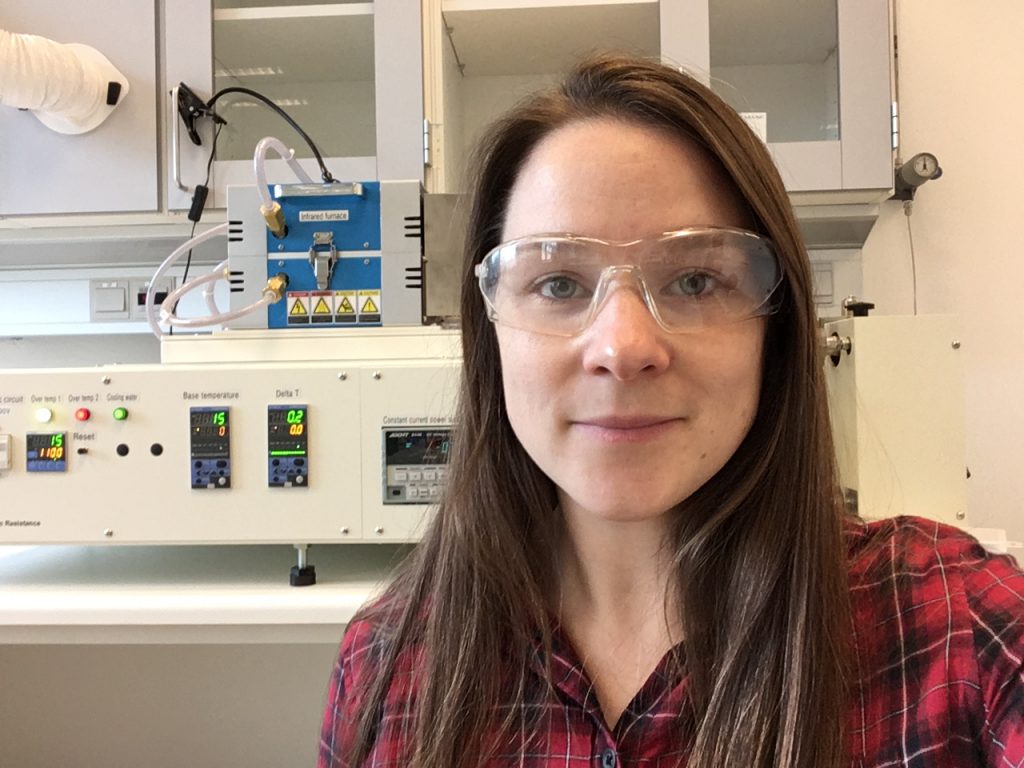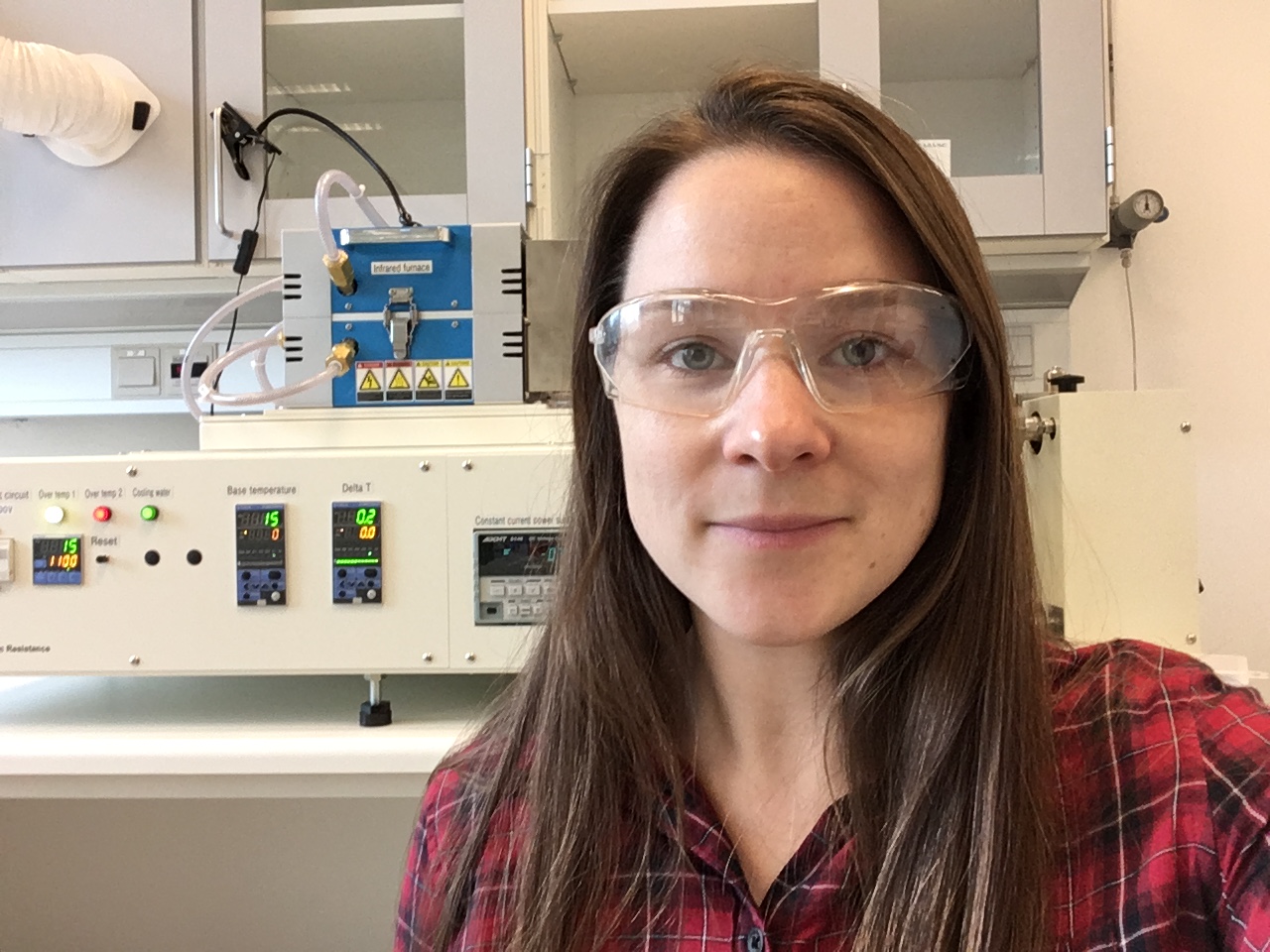From Glasgow to Aarhus

Hazel Reardon, originally from Glasgow in Scotland, has been working in Denmark for two and a half years as a postdoctoral fellow at the Center for Materials Crystallography (CMC) at Aarhus University. After obtaining her Master in Science in 2008, Hazel spent two years working in the nuclear industry at Sellafield Ltd., a company situated in the north of England. Her main focus at Sellafield was nuclear fuel reprocessing operations, an area which enhanced her interest in green chemistry and the study of materials science. In 2010 Hazel returned to Glasgow, as an exciting industry sponsored PhD studentship opportunity arose. This allowed her to explore solid state hydrogen storage materials at the University of Glasgow.
– I am fascinated by the relationship between structure and functionality, and how we can modify the properties of a material by the study and modification of its chemistry. My PhD studies focused on the synthesis, structure and characterisation of lightweight hydrogen storage materials for use in unmanned aerial vehicles.
After successfully defending her thesis in 2014, Hazel joined the research group of Professor Bo Brummerstedt Iversen in the Center for Materials Crystallography at Aarhus University.
Focus on thermoelectric materials
Since Hazel joined the CMC at Aarhus University, she has been focusing on high temperature thermoelectric materials and their ability to convert thermal energy to electrical energy. Research in this field is important since it provides an alternative to fossil fuel derived power generation methods and waste heat recovery. Thermoelectric systems are sustainable energy conversion technology with no polluting effluents, and are feasible in a wide temperature range.
Optimizing thermoelectric materials has proven to be difficult, since the materials must be able to both insulate heat and also effectively conduct electricity; two qualities that are not easily combined in one material. In addition, the efficiency and stability of high temperature thermoelectric materials must be balanced and understood. Therefore, diffraction methods are vital in building the entire physical and chemical descriptions of such systems, from the atomic level through to bulk solids for modules.
In the Interreg experiment project Hazel is focusing on a material called RuAs2. RuAs2 is prepared by melting ruthenium and arsenic together in the correct proportions. The aim is to examine the characteristics of RuAs2 in depth, and clarify its potential as a thermoelectric material. This is the first time RuAs2 is being analyzed for this purpose. Hazel explains how this process works:
– In order to densify the sample, and generate a compressed pellet suitable for thermoelectric modules, we have used the spark plasma sintering (SPS) technique. This involves applying a pressure and then heating for a short period of time by passing a current through the sample. This results in a dense pellet of the sample. Part of the project involved use of synchrotron facilities to measure high quality diffraction data at a range of temperatures, which is essential for understanding the effect of the high pressure-high temperature treatment on the sample and its thermal stability.
Cross border experiences
In the experiment project, Hazel is collaborating with Chalmers University of Technology. She believes that the collaboration has worked very well and has strengthened the qualities of her research. SPS technique experiments are used in both Aarhus and Chalmers University, but working together has given new input to the methods.
– I had met the collaborators previously, but had not visited their institute or worked with them directly, so this project was a great opportunity for me to understand how our work was connected to what they do. I think this project has strengthened the contact between Aarhus and Chalmers University, and we hope to start more projects which are based on aspects of this one. This is of clear advantage to the development of closer relations within the region.
The project has allowed the research group to examine the structure-property relationships in RuAs2, which gives insight in to how other thermoelectric materials of this kind will respond to the same treatment.
– We can now investigate whether we can influence the physical properties of the sample by tuning the composition through an understanding of its structure. This is of critical importance in the advancement of thermoelectric research.
Future plans
After the experiment project Hazel will complete a publication with the results. She is pretty sure that she will continue the collaboration with Chalmers even after the experiment and they are already in the process of setting up new projects together.
– I believe that this research will enable us to understand how materials of this kind can be applied and/or modified to generate a useful product. Through the SPS route, we believe that there is a significant opportunity for upscaling thermoelectric materials production, and this will be the next step for this research.
There is a great demand for better thermoelectric materials and if RuAs2 is proven to be efficient it could work as a complementary method to other green materials. When it comes to the practical parts of the project Hazel has used the SPS technique as a post-processing method, and conducted the diffraction experiments at synchrotron facilities in the US and Japan. A good alternative in the future would be to use the MAX IV facility to collect high quality X-ray diffraction data and in situ studies of materials performance and functionality.
The ESS would be suitable for more advanced investigations on the physics of thermoelectric materials, since neutrons interact with the nuclei of atoms (rather than their electrons, as is the case in X-ray diffraction).
– I think these facilities are important for the next generation of scientists. When we see new facilities like MAX IV and ESS we see a lot of new opportunities! The availability of new and accessible research facilities is pivotal in developing new frontiers and advances in materials science.
Hazel is hoping to stay connected to research as her career progresses. Her skills as a material scientist have given her a broad knowledge about chemistry, engineering, physics and maths, which could be useful for the study of many different kinds of materials.
– I hope that whatever job I have in five years allows me to remain involved in research. Since moving to Aarhus, I have had many new opportunities to learn a language and experience a new culture. I definitely see myself staying in Scandinavia for the foreseeable future.
Text and interview: Kristina Sandberg Hrbinic
Short facts
Young researcher: Hazel Reardon
Experiment: RuAs2 – A promising thermoelectric material
Experiment period: 2016-07-01 – 2016-12-31
Supervisor: Bo Brummerstedt Iversen, Aarhus University
Co-supervisor: Anders Palmqvist, Chalmers University of Technology
